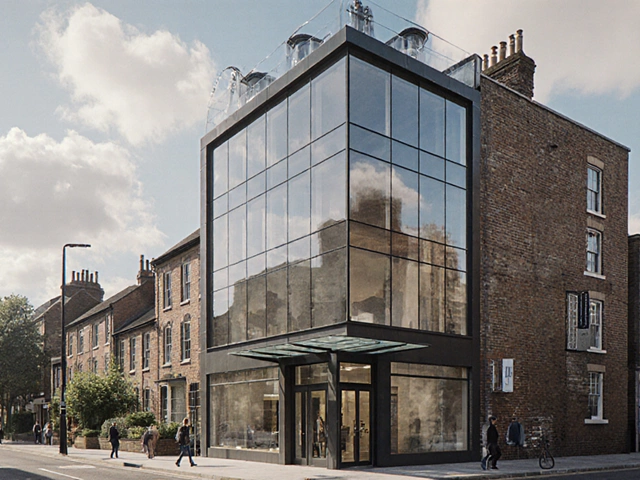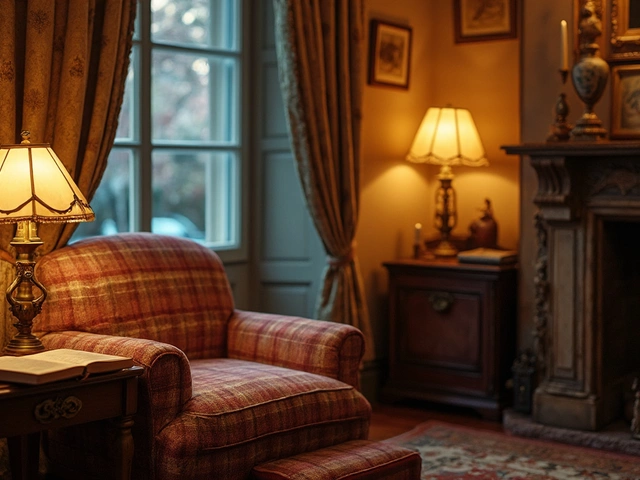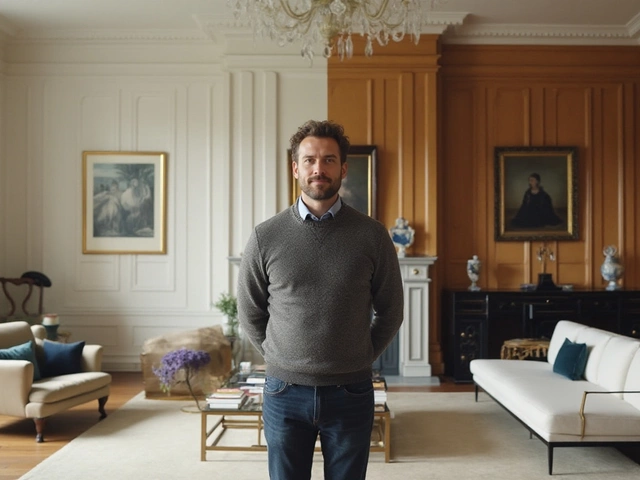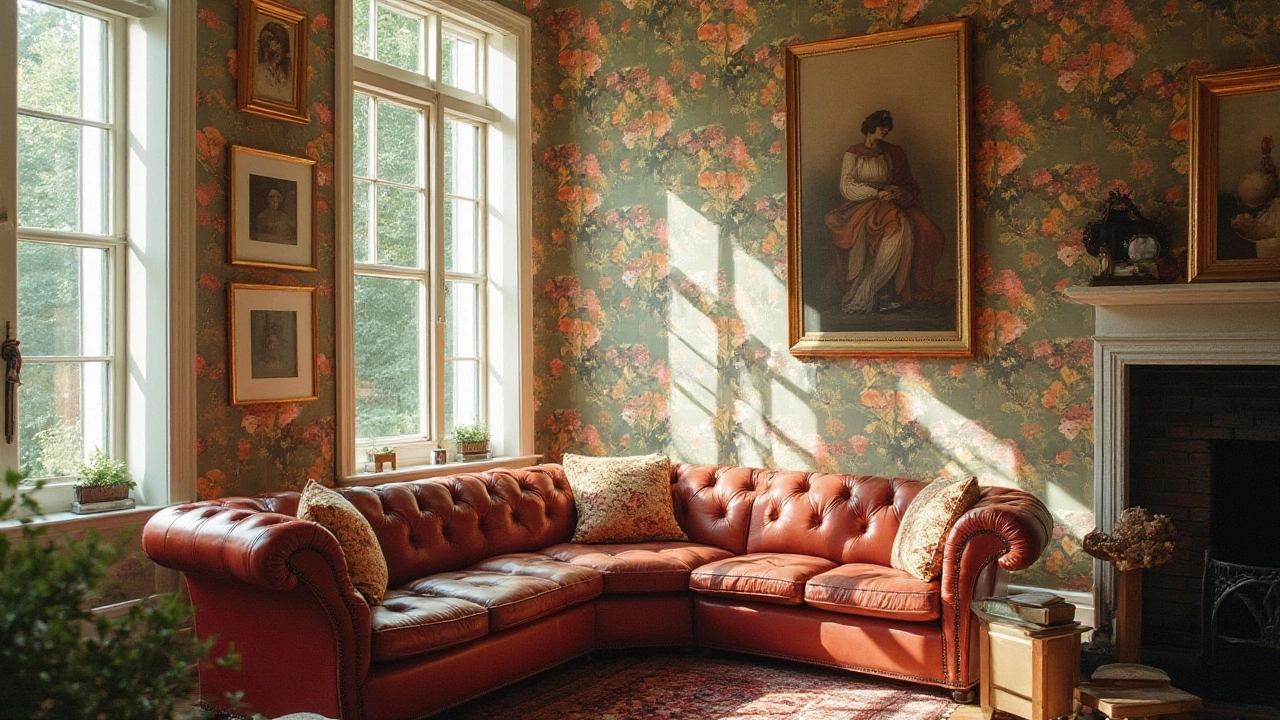
In recent years, wallpaper has made a remarkable comeback in the world of interior design. Whether it’s bold patterns, intricate designs, or subtle textures, wallpaper offers an exciting alternative to the sometimes monotonous simplicity of painted walls. Interestingly, this resurgence aligns with a broader shift towards more personalized and expressive interior spaces.
Perhaps what makes wallpaper so appealing today is its versatility. Gone are the days of sticky, paper-thin sheets that would tear at the slightest touch. Now, with advancements in materials and technology, wallpapers can be easily applied and removed without damage, offering flexibility that paints simply cannot match. This makes them ideal for both homeowners and renters looking to make a space uniquely their own.
Join us as we delve into the captivating world of wallpaper, exploring its rich history, the innovative designs gracing showrooms today, and some tangible benefits that explain why it’s wrapping its way into our hearts and homes once more.
- A Brief History of Wallpaper
- Contemporary Design Innovations
- Benefits of Using Wallpaper
- Popular Patterns and Styles
- How to Choose the Right Wallpaper
- Tips for Wallpaper Application and Care
A Brief History of Wallpaper
The enchantment with wallpaper began centuries ago, long before it became a contemporary design staple. The roots of wallpaper can be traced back to ancient China, where the earliest forms of paper were invented. By the 8th century, the Chinese had mastered the art of papermaking, using rice paper, and eventually, rudimentary forms of wallpaper began to cover walls adorned with intricate designs. It wasn’t until the Renaissance period in Europe that wallpaper started gaining popularity. Initially, expensive and woven by hand, these wall coverings were only accessible to the wealthy, often depicting elaborate tapestries or landscapes. With time, though, technological advances made them more accessible to the rising middle class.
The 18th century marked a significant turning point in the accessibility and aesthetics of wallpaper. With the advent of the printing press, patterns could be printed en masse, making these previously costly adornments affordable to a broad audience. Wallpaper houses in England and France led the charge, creating a variety of styles that mirrored contemporary art movements. The French, notably, were revered for their intricate hand-painted designs and would often be seen as the innovators of wallpaper artistry.
Industrialization in the 19th century revolutionized the production of wallpaper once again. Machines now handled the intricate processes, allowing for more complex and colorful designs. During this time, William Morris, a key figure in the Arts and Crafts Movement, became prominent. His philosophy, advocating for the beauty of hand-crafted design in the wake of industrial uniformity, produced some of the most iconic and enduring patterns still sought after today. Uniquely, the freedom to craft unique spaces was at the heart of wallpaper's charm, a philosophy that resonates to this day.
In a modern context, the wallpaper journey took a dip post-1960s due to a rising preference for minimalist styles and an emphasis on whitewashed walls. However, towards the late 20th century, wallpaper began an undulating return, reflecting a broader societal swing back to personalization in home decor. Today, it offers an array of new materials and easy application processes, like peel-and-stick options, attracting both nostalgics and trendsetters.
“Wallpaper is the foundation that sets the vibe and energy of a room,” says interior designer Nate Berkus. It’s a sentiment that captures both its historical roots and modern innovation. As tastes evolve, wallpaper continues to serve as a testament to art’s enduring expression through layers of design, history, and technology, wrapping the essence of human creativity around our everyday spaces.
Contemporary Design Innovations
The kaleidoscope of contemporary wallpaper design innovations has sparked a renaissance in home interior design. In today's market, wallpaper is so much more than a decorative wall covering. Designers and manufacturers are continuously pushing boundaries, offering a range of styles that cater to diverse tastes, from the chic minimalist to the elaborately baroque. One of the exciting developments has been in the use of eco-friendly materials. Sustainable wallpapers made from recycled paper, and those printed with water-based inks, not only enhance the aesthetic appeal but also echo a growing public preference for environmentally conscious choices.
Technological advancements have spurred a wave of creativity in the wallpaper industry. Digital printing allows for an almost infinite array of patterns and the finest details that traditional methods can't achieve. This technology enables custom designs, giving homeowners the ability to create something truly personal and unique. Remarkably, this process is both cost-effective and quick, making personalized decor accessible to a larger audience. According to design expert Emily Henderson, "Wallpaper has transcended its historical reputation as simply a backdrop, now acting as a statement piece in its own right."
Henderson further notes, "People are no longer afraid to express their individuality through bold prints and daring colors."
An intriguing innovation is the development of self-adhesive wallpaper which is gaining popularity, especially among renters. This peel-and-stick variety simplifies the application process significantly, transforming the DIY experience. It's perfect for those who want to refresh their living space without the permanence of traditional options. Not only does this type of wallcovering reduce messiness, but it also eliminates the need for glue or paste, thus lowering the entry barrier for those new to home improvement.
3D textured wallpapers are another trend captivating the market. These designs add depth and dimension to any room, creating a tactile experience that begs to be touched. Such options often employ advanced techniques, such as embossed patterns that catch light and shadow in fascinating ways. The interplay creates atmosphere and drama, whether enhancing a cozy nook or making a bold statement in expansive living areas. Moreover, these textures elevate mundane spaces, turning them into engaging focal points that tell a story, often leaving guests impressed and homeowners proud.
Finally, a significant area of growth is in the smart wallpaper segment, which integrates technology with aesthetic appeal. While still in its nascent stages, this innovation promises to revolutionize how we interact with our walls. Imagine a wallpaper that changes color with your mood or one that can display images from your smartphone. Although it sounds like science fiction, companies are actively working on making these futuristic designs a part of our everyday lives. Indeed, as we stand at the cusp of these technological breakthroughs, the line between function and form continues to blur, making wallpaper a perfect blend of tradition and innovation.
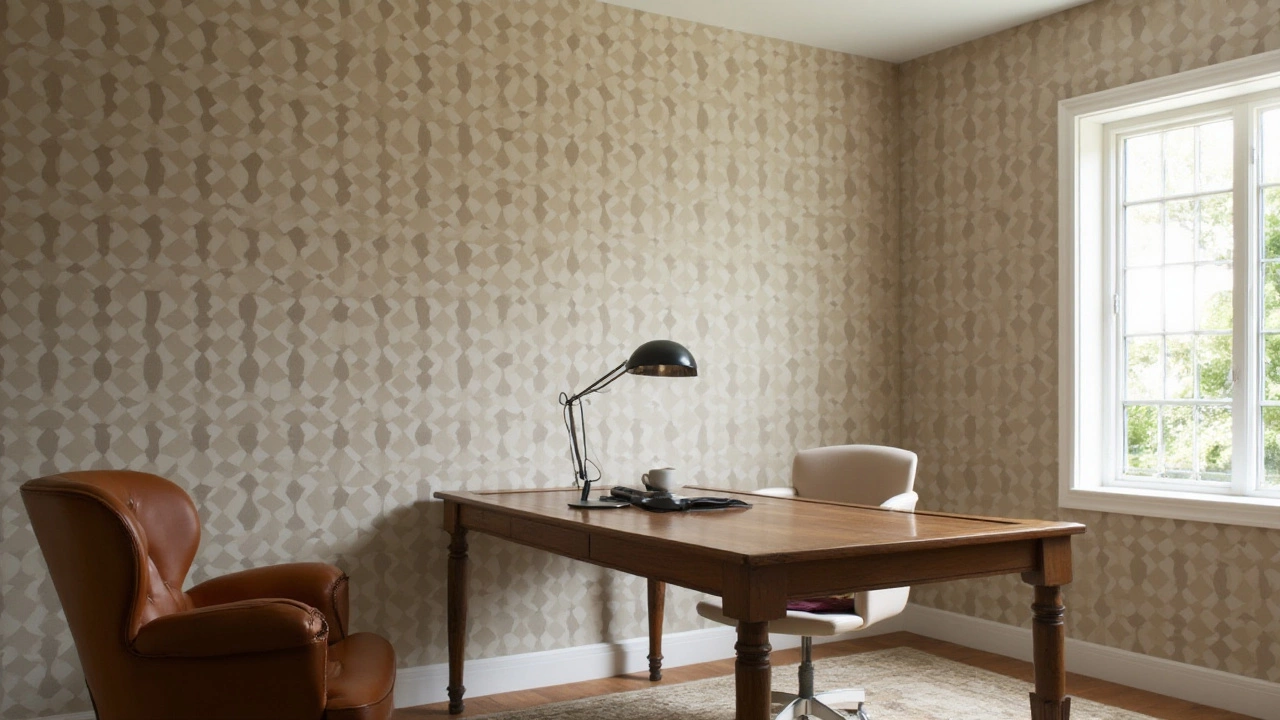
Benefits of Using Wallpaper
Wallpaper has been gaining traction once again as a pivotal element in interior design, thanks to its unique ability to transform spaces in ways that paint simply cannot match. This resurgence isn't just about nostalgia; it’s rooted in some very practical benefits. First, wallpaper offers a vast range of designs and patterns that can turn any room into a visual masterpiece. Whether you're inclined towards geometric shapes, lush florals, or even textured solids, there is a design out there that perfectly mimics your style and enhances your home's aesthetic appeal.
The durability of modern wallpaper is another key selling point. Unlike the fragile papers of the past, today's options are made with high-quality materials meant to outlast years of wear and tear. Many designs are also scrubbable, meaning they can withstand the daily scuffles of living, making them ideal for high-traffic areas like hallways or children's rooms. This quality ensures that your investment in home decor doesn't demand frequent updates, saving both time and money in the long run.
Another significant advantage is the way wallpaper can enhance acoustic properties within a room. By adding texture and layers to the walls, wallpaper can effectively absorb sound, leading to a quieter and more comfortable atmosphere. This makes it particularly beneficial in urban settings where noise pollution can be an issue. Additionally, it provides a layer of insulation, which can help maintain the desired temperature inside, offering a subtle way to reduce energy costs. In a recent article from Interior Design Magazine, expert decorator Emily Ellis noted,
"The right choice of wallpaper doesn't just reflect taste but can act as a functional element in managing sound and temperature, making it a multifunctional design choice."
Aesthetic diversity doesn't mean complexity in application or removal. Modern wallpapers come in user-friendly formats such as peel-and-stick options, reducing the anxiety typically associated with traditional pasting methods. This characteristic is a game-changer, particularly for renters who wish to personalize their spaces without the risk of incurring landlords' wrath. The ease of application and removal means you can effortlessly update your walls without damaging underlying surfaces, providing the flexibility to experiment and redecorate as trends and personal tastes evolve.
In addition, wallpaper is also an excellent tool for creating accent walls, allowing homeowners to highlight particular architectural features or create focal points without overwhelming the room. This strategic application can enhance a room's design by drawing attention to specific areas, adding depth and character. The use of wallpaper in this manner is growing in popularity, as people seek elegant yet dramatic ways to add personality to their living spaces.
Popular Patterns and Styles
Wallpaper is on the rise again, becoming a favorite choice for those looking to refresh their living spaces with a touch of flair and personality. One cannot overlook the range of patterns and styles that contribute to its renewed popularity. Dive into vintage-inspired florals, which harken back to the romantic sensibilities of the Victorian era while incorporating contemporary elements that make them perfect for today's homes. These designs not only add depth and interest to a room but also lend a nostalgic elegance that can complement both modern and traditional decor.
For those who lean towards a more geometric aesthetic, modern abstract designs with bold shapes and colors are making waves. This trend resonates with those who appreciate clean lines and the dynamic energy of contemporary art. Wallpapers with geometric patterns have the propensity to energize any space with their rhythmic repetitions and sharp contrasts. A statement from Jane Druker, an interior design expert, encapsulates this trend beautifully:
"Wallpaper is no longer just a backdrop; it’s a piece of art that speaks loudly and proudly of your taste and style."Another growing trend is the use of textured wallpaper, which adds a tactile dimension to walls that paint simply cannot offer. These wallpapers, which mimic materials like brick, wood, or fabric, provide a multi-sensory experience that enriches the spatial atmosphere.
If we look at color palettes, vibrant botanicals and jungle prints are delighting those who love an exotic feel without leaving their homes. These designs bring a splash of nature inside, creating lush, vibrant environments that make every day feel like a tropical escape. For a more subdued yet sophisticated vibe, monochrome patterns paired with intricate detailing can transform rooms into elegant retreats. The simplicity of black and white, contrasted with detailed motifs, spins a chic and classic tale that suits eclectic and minimalist tastes alike.
Given the multitude of options, it can be difficult to select the right wallpaper for your space. A proactive approach involves assessing the room's lighting and existing furnishings to ensure harmony in design. Utilizing an accent wall approach can also cater to those hesitant about covering entire rooms. This tactic strategically places bolder patterns without overwhelming the space. For enthusiasts looking to dive deeper into the world's latest wallpaper styles, here's an overview of top designs currently trending:
- Tropical Foliage: Abundant in greens and vibrant hues, ideal for infusing freshness into a space.
- Scandinavian Minimalism: Soft, neutral tones with simplistic patterns for a calming aesthetic.
- Retro Revival: Bold, psychedelic patterns that bring back the eccentric energy of the 70s.
- Art Deco: Luxurious geometric prints with gold accents, perfect for adding a touch of glamor.
- Watercolor Washes: Subtle blended shades that offer a soothing artistic backdrop.
Ultimately, the world of wallpaper is vast and varied, offering something for every taste and preference. Whether you're looking to make a grand statement or introduce subtle sophistication, the current trends ensure that you have the tools to fashion a space that echoes your personal style.
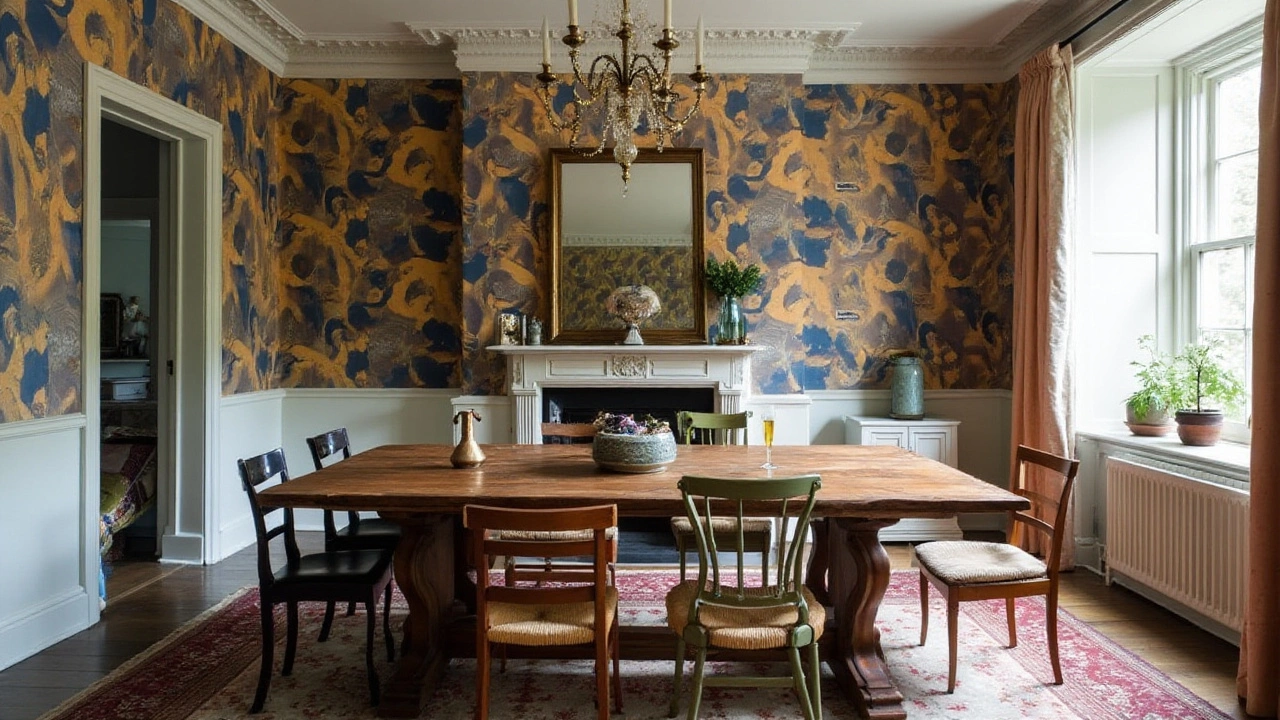
How to Choose the Right Wallpaper
Choosing the right wallpaper for your space can transform a room from just a place you live into an expression of who you are. To embark on finding that perfect wallpaper, it’s vital to first ponder what the space means to you and what kind of atmosphere you’re aiming to create. Consider the room’s existing decor, its size, the amount of natural light it receives, and even the function of the space. A small room with limited light might benefit from lighter, reflective tones to create an illusion of space, while a larger or brighter space can carry bolder, darker patterns, creating intimacy and a sense of warmth.
It’s also essential to think about the scale of patterns when making your choice. Large and bold patterns may overpower a small room, whereas they can add drama and sophistication to larger areas. Conversely, smaller patterns offer a subtler backdrop, suitable for spaces where the furniture or artwork takes center stage. Remember, your choice in home decor reflects your personal taste, so trust your instincts but don’t shy away from experimenting with something daring, especially if it's just a feature wall.
Material selection is equally important, as it will affect application and maintenance. Vinyl wallpapers are durable and easy to clean, ideal for high-traffic areas or households with children and pets. Consider non-woven wallpapers for a more luxurious feel, which are tear-resistant and breathable—great for kitchen or bathroom use. Eco-friendly options made from sustainable materials are gaining traction as well, appealing to environmentally-conscious homeowners.
An aspect that might often get overlooked is the emotional response certain colors and patterns evoke. Light blues and greens can induce tranquility and calm, making them suitable for bedrooms or bathrooms. Bold reds and oranges might be invigorating for social spaces like dining rooms. A well-known interior designer once mentioned, "Wallpaper is like a great companion, adding character to spaces and sparking joy in subtle ways."
Budget is another practical consideration. Wallpaper ranges widely in price based on the complexity of design, material, and brand. It's important to balance your aesthetic desires with financial feasibility to avoid overspending. Always purchase a little extra to account for mistakes or future repairs, keeping the rolled label for accurate reordering.
If you’re still uncertain, consider sampling. Many suppliers offer samples of their interior design collections, allowing you to visualize how it complements your existing decor. Apply the samples to your walls at different times of day to see how they interact with changing light. That way, you enhance your confidence in the choice, ensuring satisfaction with the end result.
The last step is to ask for professional advice when needed. Consulting with designers or experienced decorators can provide insights into trending styles you might have missed. Their experience ensures you avoid common pitfalls and optimize your space’s potential. Remember, the goal is to create a harmonious environment where every wall becomes a canvas, echoing your style and passions.
Tips for Wallpaper Application and Care
Applying wallpaper can seem like a daunting task, but with a bit of planning and a few insider tips, you can achieve professional results right at home. Begin by selecting the right wallpaper for your space. Consider the room's purpose, the level of humidity, and the amount of foot traffic. For high humidity areas like bathrooms, choose vinyl wallpaper or other moisture-resistant materials. Once you’ve got the right product, it's time to prepare your walls. Clean and smooth surfaces are non-negotiable; any bumps or dirt can lead to unsightly bubbles or peeling. Use a mild detergent to wipe down walls and sand any rough areas. Applying a primer or lining paper can also help achieve an even finish, providing a better surface for the wallpaper to adhere to.
Before diving into the application, gather the necessary tools: a utility knife, smoothing brush or roller, seam roller, and a plumb line. Using a plumb line is crucial as it ensures your wallpaper is hung straight, which is especially important if you’re working with patterned designs. Begin by measuring your wall from top to bottom and cutting the wallpaper into strips that are slightly longer. This way, you can trim any excess after application. When you're ready to apply, use a strong adhesive suited to your wallpaper type. Start at the top, pressing down evenly as you work your way to the bottom. With patience and precision, smooth out air bubbles with your smoothing tool. If working with patterns, ensure each strip aligns properly to maintain continuity—nothing screams amateur hour more than misaligned motifs.
Maintenance is key to keeping your newly papered walls looking fresh. Dust your wallpaper regularly with a soft cloth or a vacuum cleaner's brush attachment. For non-washable wallpapers, a mixture of lukewarm water and a gentle cleaning solution can be used sparingly for stubborn spots. Be cautious with excess water, as it can seep behind the paper and weaken the adhesive. Speaking of maintenance, reputable designer and DIY expert, Sarah Cole, notes,
"Consistent care extends the life of your wallpaper significantly, much like any other interior investment. Proper cleaning not only preserves aesthetics but also safeguards the underlying material, ensuring lasting durability.”
Should any seams or edges start peeling, they can often be re-secured with a small amount of adhesive applied with a fine artist's brush. Consider making repairs promptly before they extend. For a high-traffic area, consider an acrylic coating to provide added protection against fingerprints and scuffs. If you decide to change your interior design, modern wallpapers are fortunately designed for ease of removal. Peelable wallpaper leaves minimal residue and won’t damage the wall when removed properly, allowing you the freedom to swiftly reinvent your space as needed.
And remember, patience and precision are your allies. Taking your time to align each strip carefully and allowing the glue to set properly will result in a pristine finish that you'll be proud to showcase. Happy decorating!


